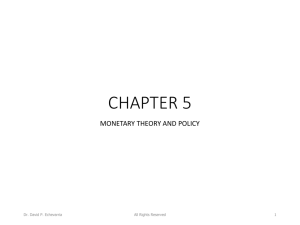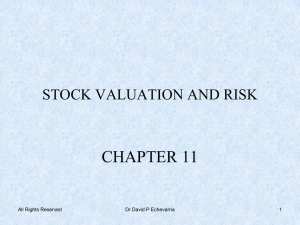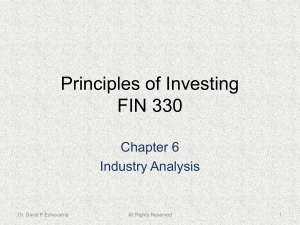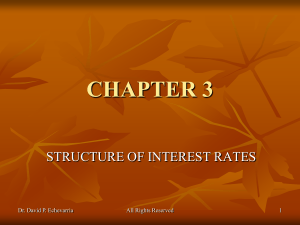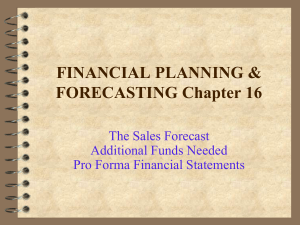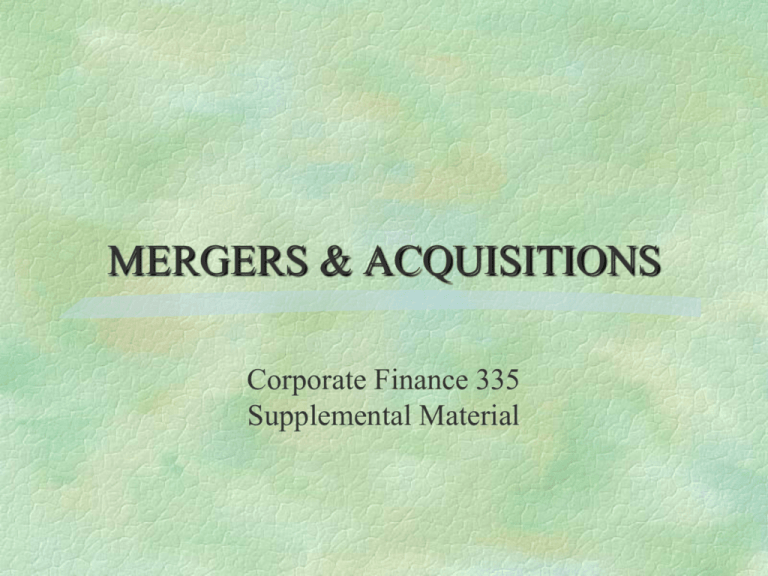
MERGERS & ACQUISITIONS
Corporate Finance 335
Supplemental Material
MERGERS & ACQUISITIONS
Why do firms merge or acquire other firms?
Several possibilities.
Increase market power
Acquire financial strength,
Tax loss carry forwards
Acquire specific product lines
Achieve synergies
Gain economies of scale
Strategies subject to debate: Prevalent belief is that
M&A result in increased profits, competitiveness,
& increased stockholder wealth. Evidence reveals
this is not necessarily so…
Dr. David P. Echevarria
All Rights Reserved
Slide 2
Historic Merger Activity
Period
1889–1904
1916–1929
1965–1989
1992–1998
2000
Facet
Horizontal mergers
Vertical mergers
Diversified conglomerate mergers
Congeneric; Hostile takeovers; Corp Raiding
Cross-border mergers
First Wave Survivors: GE, US Steel, DuPont
Name
First Wave
Second Wave
Third Wave
Fourth Wave
Fifth Wave
1900: Acquired firms generated 20% of GDP
1990: Acquired firms generated 10-11% of GDP
Third Wave: Conglomerates (diverse prod/mkts)
ITT (Auto Rental, Nabisco, Satellite, Telephones,…)
Dr. David P. Echevarria
All Rights Reserved
Slide 3
I. BASIC DEFINITIONS
A. Merger; combination of two firms into one
firm.
B. Acquisition; the absorption of one business
by another.
1. Purchase: smaller (typical) absorbed into the
larger.
a. Cash.
b. Securities.
c. Combination of cash and securities.
2. Pooling of interests;
a. Companies maintain separate identities.
b. One set of books for both corporations (pooling).
Dr. David P. Echevarria
All Rights Reserved
Slide 4
I. BASIC DEFINITIONS
C. General Process; Acquisitions
1. Initial contacts between management teams.
2. Tender offer by acquirer to target company
stockholders.
3. Stockholders typically required to vote
approval.
4. Acquirer purchases majority interest or
complete interest.
Dr. David P. Echevarria
All Rights Reserved
Slide 5
I. BASIC DEFINITIONS
D. General Process; Merger
1. Initial contacts between management teams.
2. Negotiations as to new name, management
team.
3. Stock exchange details negotiated.
4. Merger proposal goes to stockholders for vote.
5. If stockholders approve, deal consummated
when stock changes hands.
Dr. David P. Echevarria
All Rights Reserved
Slide 6
II. TERMINOLOGY OF M&A
A. "BEAR HUG";
1. Acquirer mails letter to directors of target firm
announcing intentions and requiring a quick
decision on bid.
2. If this strategy fails, it is usually followed by
“B” below.
B. "SATURDAY NIGHT SPECIAL";
1. Offer made to stockholders just before the
market’s close on Friday.
2. Takes maximum advantage of stockholder
greed
Dr. David P. Echevarria
All Rights Reserved
Slide 7
II. TERMINOLOGY OF M&A
C. "HOSTILE TAKEOVER";
1. When the target firm's management does not
want to be taken over and fights the tender
offer.
2. Acquiring firm must carry offer to stockholders
of target firm.
3. This strategy is generally nasty and expensive an effort frequently carried out to a
questionable conclusion.
Good deal for stockholders of target firm.
Bad deal for stockholders of acquiring firm.
Dr. David P. Echevarria
All Rights Reserved
Slide 8
II.TERMINOLOGY OF M&A
D. "WHITE NIGHT";
1. When target firm cannot defend itself against
the hostile acquirer, it will seek another firm to
firm to acquire it (one more acceptable to
management).
2. This was a favorite strategy early in the M&A
game.
Dr. David P. Echevarria
All Rights Reserved
Slide 9
II. TERMINOLOGY OF M&A
E. "GREENMAIL";
1. Occasionally, the acquirer may run into unforeseen
difficulties.
2. To make some money out of the attempt, the
would-be acquirer promises to terminate the
takeover attempt if management buys the shares the
acquirer owns;
3. Management usually pays a premium and not
without some financial damage to the target firm.
Dr. David P. Echevarria
All Rights Reserved
Slide 10
II.TERMINOLOGY OF M&A
F. "PAC-MAN";
1. A form of defense in which the target tenders for
shares of acquirer:
e.g., Martin-Marietta - Bendix.
2. The standoff is usually resolved when one of the
parties finds a "white knight" to help.
In the case of Martin-Marietta, it was Allied Corp
Dr. David P. Echevarria
All Rights Reserved
Slide 11
II.TERMINOLOGY OF M&A
G. "POISON PILL“ (Shark Repellant);
1. Another anti-takeover defense;
a. target company threatens to load the balance sheet
with debt
b. the acquirer effectively gets more debt than the
business can handle.
2. Effectiveness is not always guaranteed.
Dr. David P. Echevarria
All Rights Reserved
Slide 12
III. RESTRUCTURING ACTIVITY
A. Expansion; adventures began with...
1. Mergers.
2. Acquisitions.
3. Joint Ventures.
B. Sell-Off:
1. Creating A New Legal Entity,
2. Separate corporate control
C. Spin-Off:
new stock/new companies to old shareholders.
Dr. David P. Echevarria
All Rights Reserved
Slide 13
III. RESTRUCTURING FIRMS.
D. Divestitures;
1. Sale of corporate assets.
2. Equity carve-outs (new stock to shareholders).
E. Maintaining Corporate Control
1. Premium buy-backs; effective "greenmail".
2. Standstill agreements; would-be acquirer stops
3. Anti takeover amendments; changes to
corporate charter.
4. Proxy Contests; getting list of stockholders is
problem.
Dr. David P. Echevarria
All Rights Reserved
Slide 14
Why do many deals fail?
A.
B.
C.
D.
Excessive Payment Premiums for
Business
Lack of Human Integration
Mismanagement of cultural differences
Failure to communicate new culture to
employees of acquired businesses
Dr. David P. Echevarria
All Rights Reserved
Slide 15

